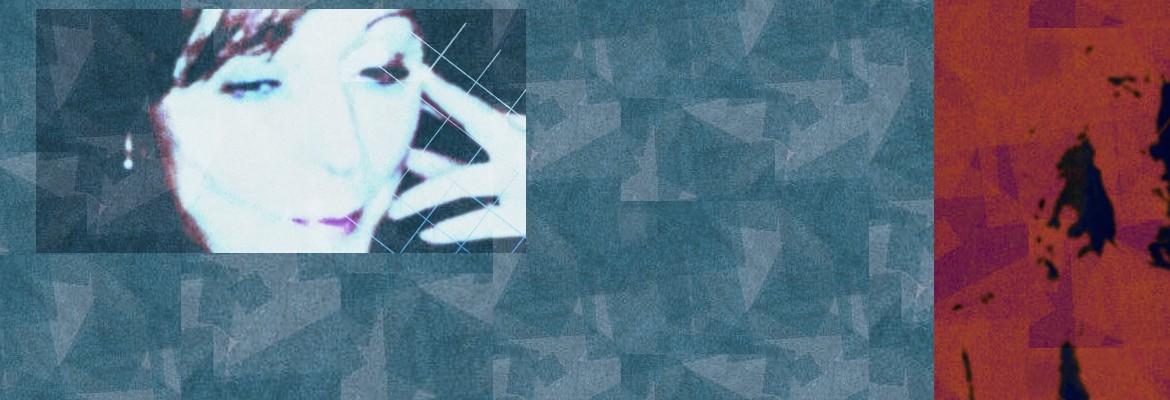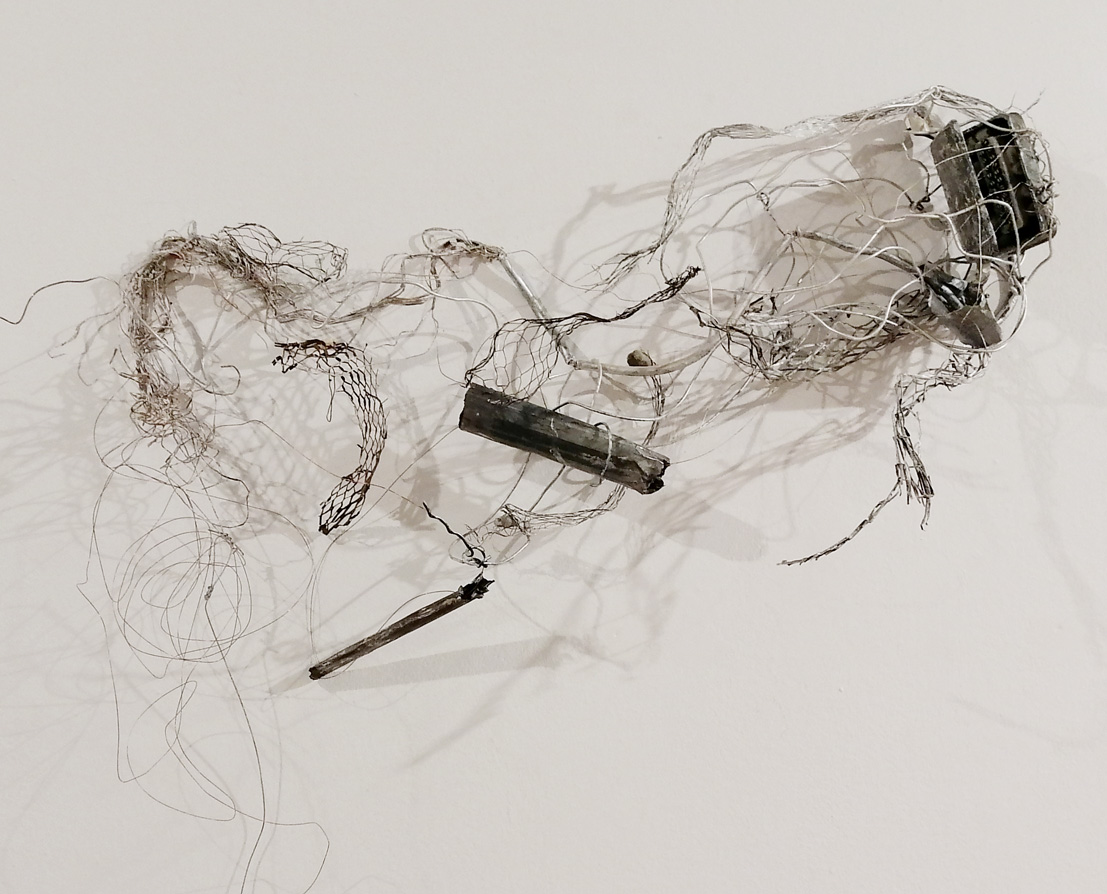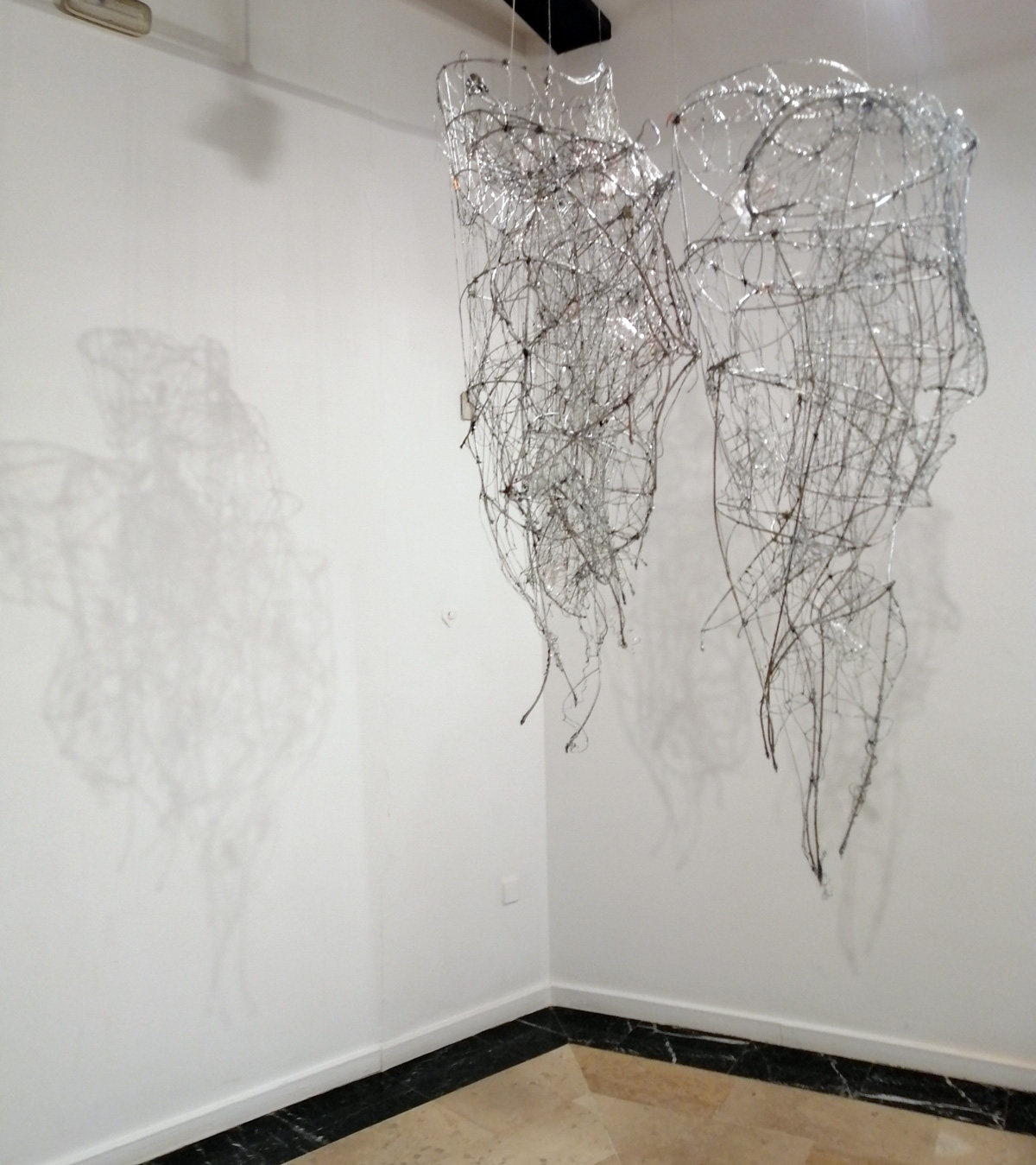Presentación del catálogo de la exposición “The other voice” de la artista norteamericana Kathryn Hart.
Presenta la escritora y crítica de arte Amparo Zacarés, con la presencia de la artista y de la comisaria, Rosa Mascarell.
Ve noticia en À Punt Mèdia
Sala Coll Alas
Viernes 13 de marzo, 19:30h
Plaça Escoles Pies
46701 Gandía (València)
THE OTHER VOICE (valencià)
KATHRYN HART
L’artista multidisciplinària Kathryn Hart, formada entre els Estats Units i Europa, compta amb una reconeguda trajectòria professional sorgida de les seues exposicions, individuals i col·lectives, en diverses parts del món. Les seues obres han sigut catalogades en el National Museum of Women in the Arts per la National Association of Women Artists i han rebut l’esment i el patrocini de diversos organismes culturals que procedeixen de l’àmbit artístic internacional. Per a aquesta exposició que alberga la Sala Coll Alas de Gandia, després d’haver passat abans per la Biennal de Venècia, l’artista reuneix una sèrie d’obres de tall abstracte jugant amb la geometria de l’espai i que va realitzar inspirant-se en el mite grec de Aracne. Un relat que apareix en el llibre VI de les Metamorfosis d’Ovidi (segle I a. C.), que conta la història d’un desafiament i que passaria de la literatura a la iconografia amb el cèlebre quadre Las hilanderas de Velázquez (1657) que es conserva en el Museu del Prado.
En el seu conjunt, la composició i el muntatge espacial de la interpretació d’aquest mite per part de l’artista nord-americana, s’inscriu en aqueixa generació de dones artistes que han conquistat al públic a través de la bellesa sòbria i subtil de les seues fotografies, pintures i instal·lacions vinculades a un art matèric en el qual ha prevalgut el seu caràcter tridimensional realitzant environments o escultures com a fórmula creativa. En el mateix procés creatiu utilitza materials diversos que van del filferro al fil, tela, paper fet a mà, arena i tot tipus d’objectes trobats, amb ells aconsegueix una determinada configuració objectual en direcció dispersa i ascendent per a servir d’altaveu a aquelles dones dissidents del Renaixement en les quals s’ha inspirat. De fet l’artista no està interessada a recuperar el paper tradicional de la dona-esposa que tix i espera com va fer Penélope. Més aviat reflexiona i dirigeix la seua atenció sobre la tela que va teixir Aracne, aquella jove que es va atrevir a brodar els escàndols i les intrigues dels déus i a qui Atenea va convertir en aranya.
D’una banda, la contextualització de la temàtica enalteix la capacitat de les dones per a connectar entre si creant xarxes i eixir de l’aïllament de la llar. Per una altra, les figures seleccionades com a referents van lligades al coneixement, la rebel·lia i la transgressió. Així doncs, per a retornar la veu als qui van ser silenciades, Kathryn Hart recrea artísticament el testimoniatge que aquelles dones agosarades i valentes del segle XVI van deixar com estela, com van ser Lucrècia Borja, María Enríquez i Moderta Fonte, conciliant d’aquesta manera art i gènere i oposant-se a la tendència habitual en la història de l’art occidental, on el fàcil és trobar un tipus de feminitat estereotipada, heretada al llarg de els segles i on les mateixes dones, com a observadores i espectadores, contemplaven les imatges que les representaven acomodant-se a la visió masculina.
En línia amb l’art contemporani nord-americà, l’artista recorre al assemblage creant quadres a base de collage i peces escultòriques assemblades en les quals el component matèric conté un gran efecte plàstic-espacial. Mereix també esment la labor comissarial amb la qual s’ha aconseguit filar i donar narrativa a l’espai expositiu en el qual se situen les obres. A aquest efecte, l’espectacularitat de l’exposició naix de la mateixa estructura geomètrica combinatòria de les peces elaborades i dels jocs de llum i ombra que se li afigen. Precisament el control de la llum és un procediment més del que se serveix l’artista per a enlluernar i donar elegància als assemblatges alçats, de considerable grandària, amb els quals retorna la dignitat i la força a aqueixes altres veus que han sigut esborrades de la història.
D’aquesta proposta artística emergeix la necessitat de revisar el paper secundari que les dones han tingut al llarg de la història, reclamant la consideració que realment mereixen com a productores de significat. Al cap i a la fi indagar a partir de les diverses manifestacions artístiques, com va ser la dona en el passat, és preguntar-se si va poder destacar amb veu pròpia dins d’una cultura de caràcter patriarcal de reminiscències mítiques. En aqueix imaginari masculí general, on les dones són excloses de ser subjecte, va haver-hi els qui van alçar la seua veu i van reclamar visibilitat i reconeixement. Sabut és que la història immortalitza només allò que guarda coherència amb el model hegemònic i, en conseqüència, aquelles dones que no quadraven bé amb l’arquetip dona van ser considerades una anomalia o, com a molt, una anècdota d’escàs interés. D’ací la importància d’aquesta exposició que revela l’original consciència estètica de la gran artista multidisciplinària que és Kathryn Hart a través de la confrontació que manté amb si mateixa i les altres veus que vol rescatar de l’oblit. Una exposició, en definitiva, que combina la bellesa i la potencialitat amb la qual es viu a nivell global els nous temps del feminisme.
Amparo Zacarés Pamblanco
Associaciò Valenciana de Crítics d’Art – AVCA
THE OTHER VOICE (english)
Kathryn Hart
The multidisciplinary artist Kathryn Hart, formed between the United States and Europe, has a recognized professional trajectory arising from her exhibitions, both individual and collective, in various parts of the world. Her works have been catalogued at the National Museum of Women in the Arts by the National Association of Women Artists, and she has received the acclaim and sponsorship of various cultural organizations from the international artistic field. For this exhibition that is housed in the Sala Coll Alas de Gandia, after having passed before in part by the Venice Biennale, the artist gathers a series abstract spatial structures she made inspired by the Greek myth of Aracne. This story that appears in Book VI of Metamorphoses by Ovid (1st century BCE) tells of a challenge that would go from literature to iconography with the famous painting Las Hilanderas de Velazquez (1657) which is preserved in the Prado Museum.
As a whole, the composition and spatial montage of the interpretation of this myth by the North American artist is part of that generation of women artists who have conquered the public through the sober and subtle beauty of their photographs, paintings and installations linked to an earthy art (arte materico) in which its three-dimensional character has prevailed by making environments or sculptures as a creative expression. In the same creative process, she uses diverse materials ranging from wire to thread, fabric, handmade paper, sand and all kinds of found objects with which she achieves a certain configuration of objects in a dispersed and ascending direction to serve as a loudspeaker to those dissident Renaissance women by whom she has been inspired. The artist is not interested in recovering the traditional role of the woman-wife who knits and waits as Penelope did. Rather, she ponders and turns her attention to the fabric woven by Aracne, the young woman who dared to embroider the scandals and intrigues of the gods and whom Athena turned into a spider.
On the one hand, contextualizing the theme enhances the capacity of women to connect with each other by creating networks and leaving the isolation of the home. On the other hand, the referent figures are linked to knowledge, rebellion and transgression. So to restore the voice of those who were silenced, Kathryn Hart artistically recreates the testimony those bold and courageous women of the sixteenth century left behind (such as Lucrecia Borja, Maria Enriquez and Moderata Fonte), thus reconciling art and gender in this way and opposing the usual trend in the history of Western art where it is easy to find a stereotyped femininity inherited over centuries and in which women themselves, as observers and spectators, contemplated the images that represented them and accommodated the male vision.
In line with North American contemporary art, the artist uses assemblage to create collage-based paintings and assembled sculptural pieces in which the material component contains a great spatial effect. It is also worth mentioning the curatorial work that has succeeded in spinning and giving narrative to the exhibition space. To this end, the spectacular nature of the exhibition is born from the combinations of spatial installations of elaborate abstract pieces and the games of light and shadow that are added to it. Precisely the control of light is another procedure used by the artist to dazzle and give elegance to the raised assemblages of considerable size with which she restores dignity and strength to those other voices that have been erased from history.
From this artistic proposal emerges the need to review the secondary role that women have had throughout history, claiming the consideration they really deserve as producers of meaning. At the end of the day, it is necessary to look at the different artistic manifestations of women in the ask, and to ask whether they were able to stand out with their own voice within a patriarchal culture with mythical reminiscences. In this general male imaginary, where women are excluded from being subjects, there were those who raised their voice and demanded visibility and recognition. It is known that history immortalizes only that which is consistent with the hegemonic model, and consequently, those women who did ot fit well with the female archetype were considered an anomaly or at most, an anecdote of little interest. Hence the importance of this exhibition that reveals the original aesthetic awareness of the great multidisciplinary artist who is Kathryn Hart through the confrontation she maintains with herself and other voices she wants to rescue from oblivion. And exhibition, in short, that combines the beauty and potentiality with which we live globally in these new times of feminism.
Amparo Zacarés Pamblanco
Associaciò Valenciana de Crítics d’Art – AVCA





